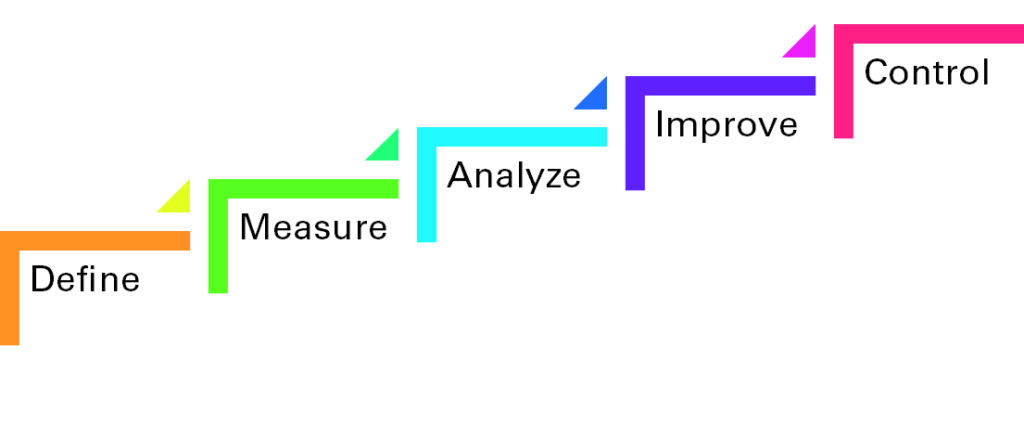In the realm of problem-solving, having a structured approach is key to achieving successful outcomes. One such methodology widely used in various industries is DMAIC – an acronym for Define, Measure, Analyze, Improve, and Control. DMAIC provides a systematic framework for problem-solving and process improvement, empowering individuals, and organizations to tackle complex challenges with a methodical approach. In this blog post, we will explore the five stages of DMAIC and understand how they contribute to problem-solving success.

- Define: The first step in the DMAIC methodology is to clearly define the problem. This involves understanding the issue at hand, its impact on the organization or stakeholders, and defining the project goals. Effective problem definition includes setting specific and measurable objectives, establishing project scope, and identifying key stakeholders involved. This stage lays the foundation for the entire problem-solving process.
- Measure: Once the problem is defined, the next step is to measure the current situation. This involves gathering relevant data and facts to assess the extent of the problem. Data collection methods may include surveys, observations, interviews, or analyzing existing data sources. The goal is to quantify the problem and establish a baseline for comparison. By measuring key metrics and identifying process performance gaps, teams can gain insights into the magnitude of the problem and prioritize improvement opportunities.
- Analyze: In the analysis stage, the focus shifts to understanding the root causes of the problem. This involves analyzing the collected data, identifying patterns, and applying various problem-solving techniques such as root cause analysis, fishbone diagrams, or Pareto analysis. The objective is to dig deeper into the problem, uncover the underlying causes, and gain a comprehensive understanding of the factors contributing to the issue. Through thorough analysis, teams can develop insights and hypotheses that will guide the improvement phase.
- Improve: Armed with a deep understanding of the problem’s root causes, the improvement stage involves generating potential solutions and implementing changes. Brainstorming sessions, design thinking methodologies, or Six Sigma tools can be used to develop innovative solutions. It is essential to evaluate and prioritize the potential solutions based on feasibility, impact, and resource requirements. Once the best solution is selected, it is implemented on a small scale to test its effectiveness. Continuous monitoring and feedback loops are essential during the improvement stage to ensure that the desired outcomes are achieved.
- Control: The final stage of DMAIC focuses on establishing controls to sustain the improvements made. This involves developing standard operating procedures, implementing monitoring systems, and defining performance metrics to ensure that the problem does not resurface. Robust control mechanisms help maintain the gains achieved during the improvement stage and prevent regression. Ongoing measurement and analysis are vital to detect any deviations and take corrective actions promptly.
Conclusion: The DMAIC problem-solving technique provides a systematic and structured approach to address complex challenges and drive continuous improvement. By following the five stages of Define, Measure, Analyze, Improve, and Control, organizations can make data-driven decisions, uncover root causes, implement effective solutions, and sustain improvements over time. Whether applied in manufacturing, healthcare, software development, or any other industry, DMAIC empowers teams to identify problems, develop solutions, and achieve meaningful outcomes.
Implementing DMAIC requires collaboration, data-driven decision-making, and a commitment to continuous improvement. By embracing this problem-solving methodology, individuals and organizations can enhance their problem-solving capabilities, drive process efficiencies, and deliver better outcomes. So, the next time you encounter a challenging problem, remember the power of DMAIC and embark on your journey to effective solutions.
One thought on “The DMAIC Problem-Solving Technique: A Path to Effective Solutions”